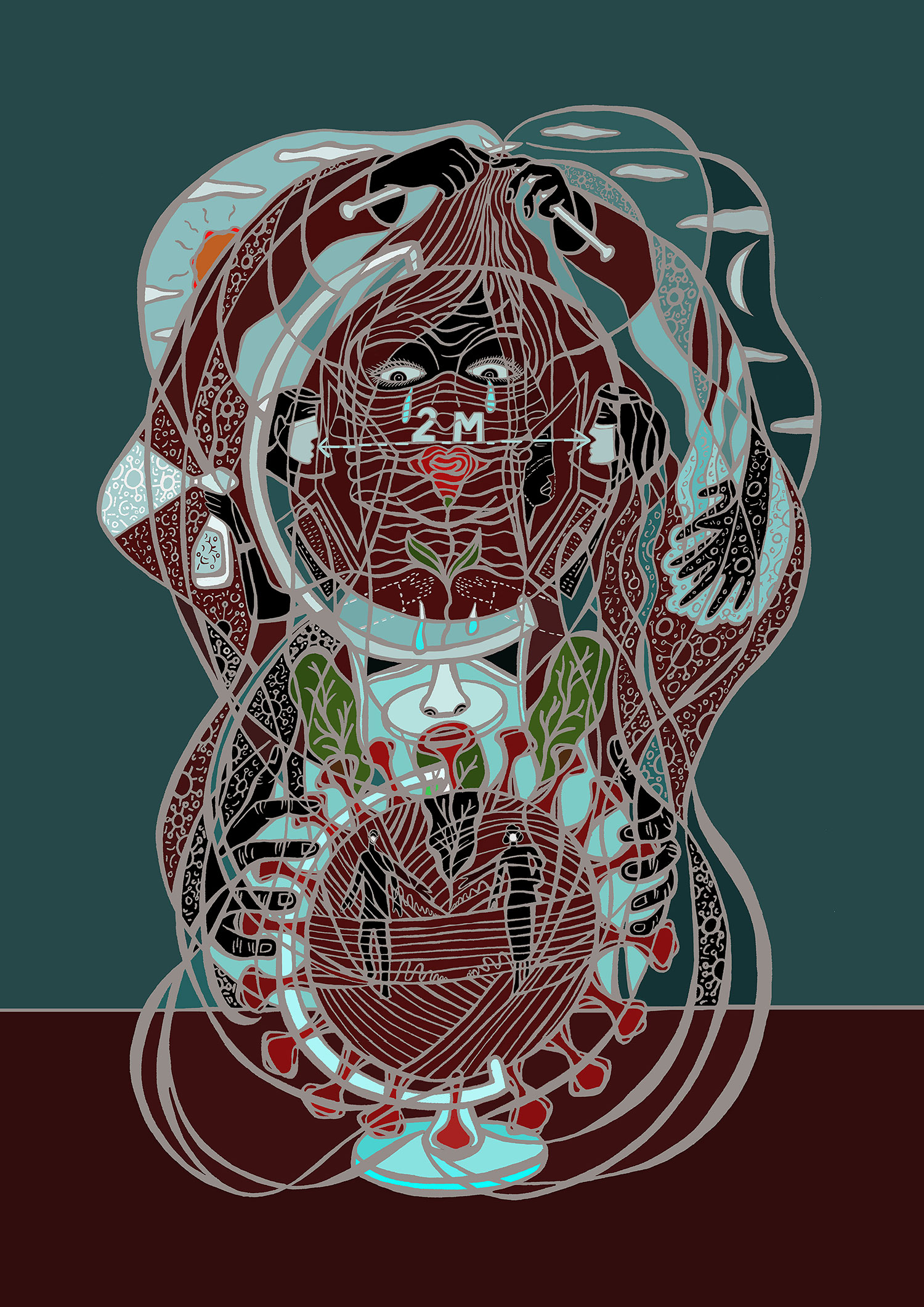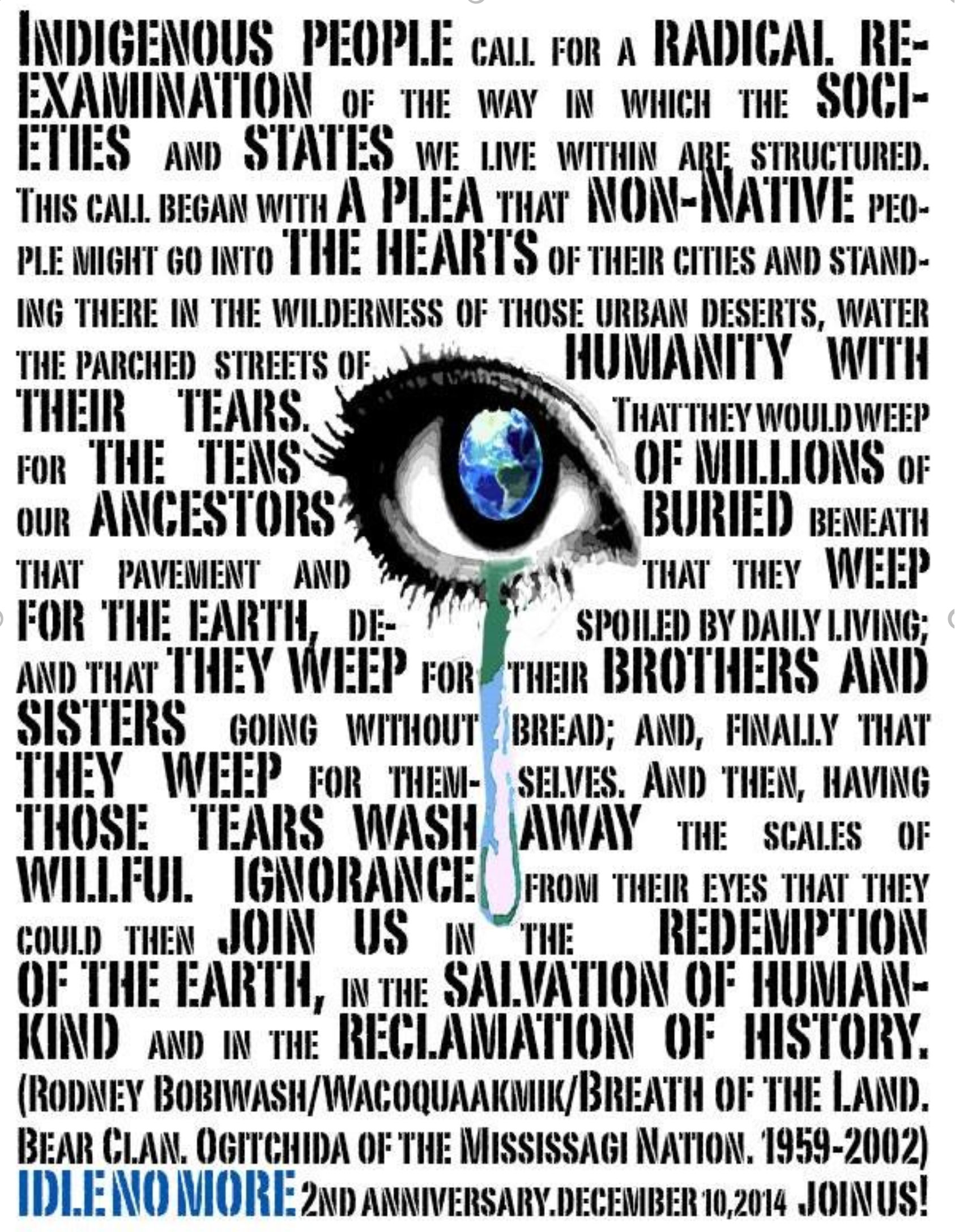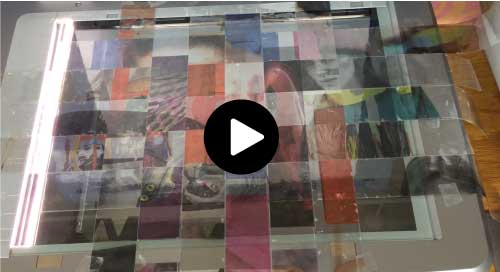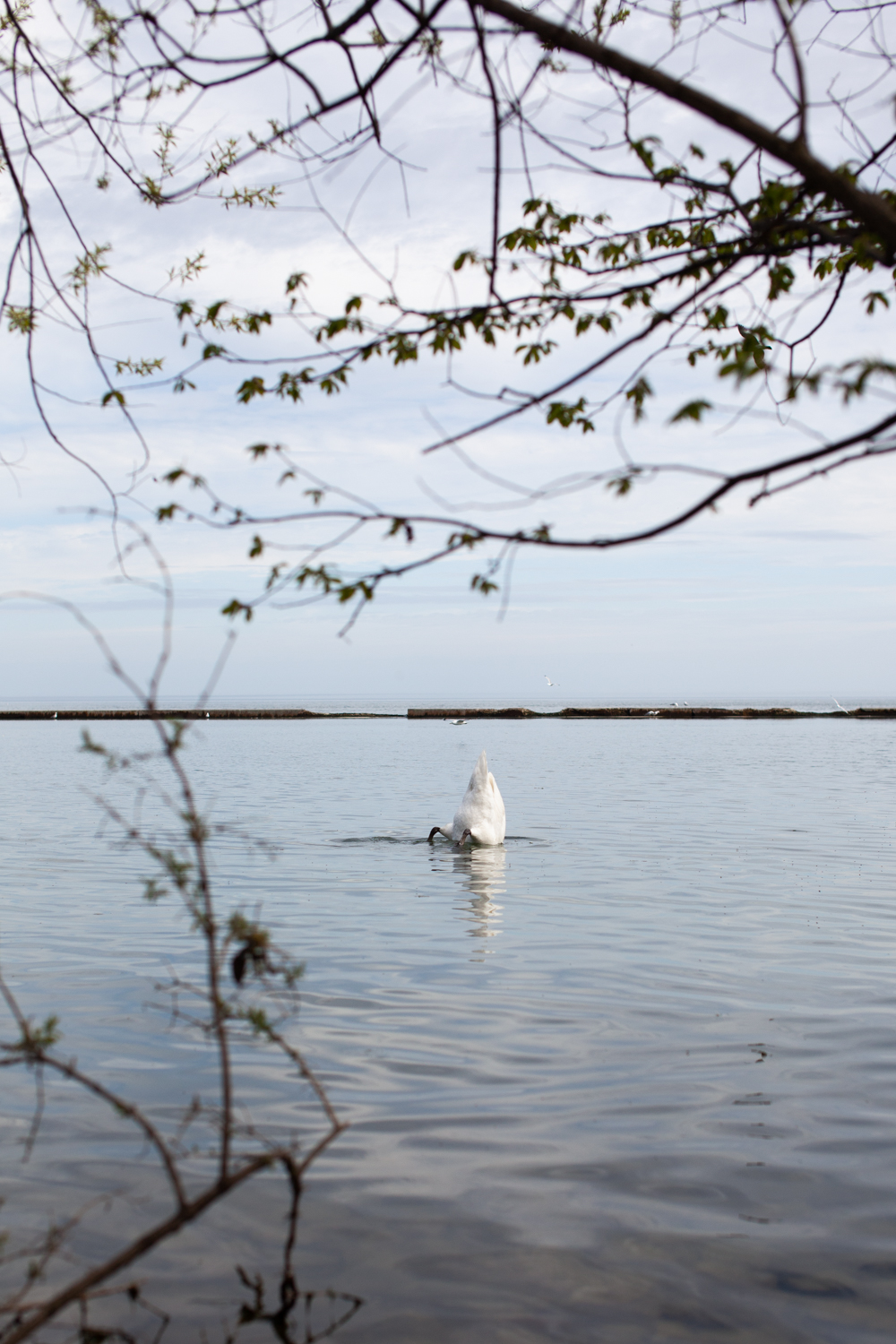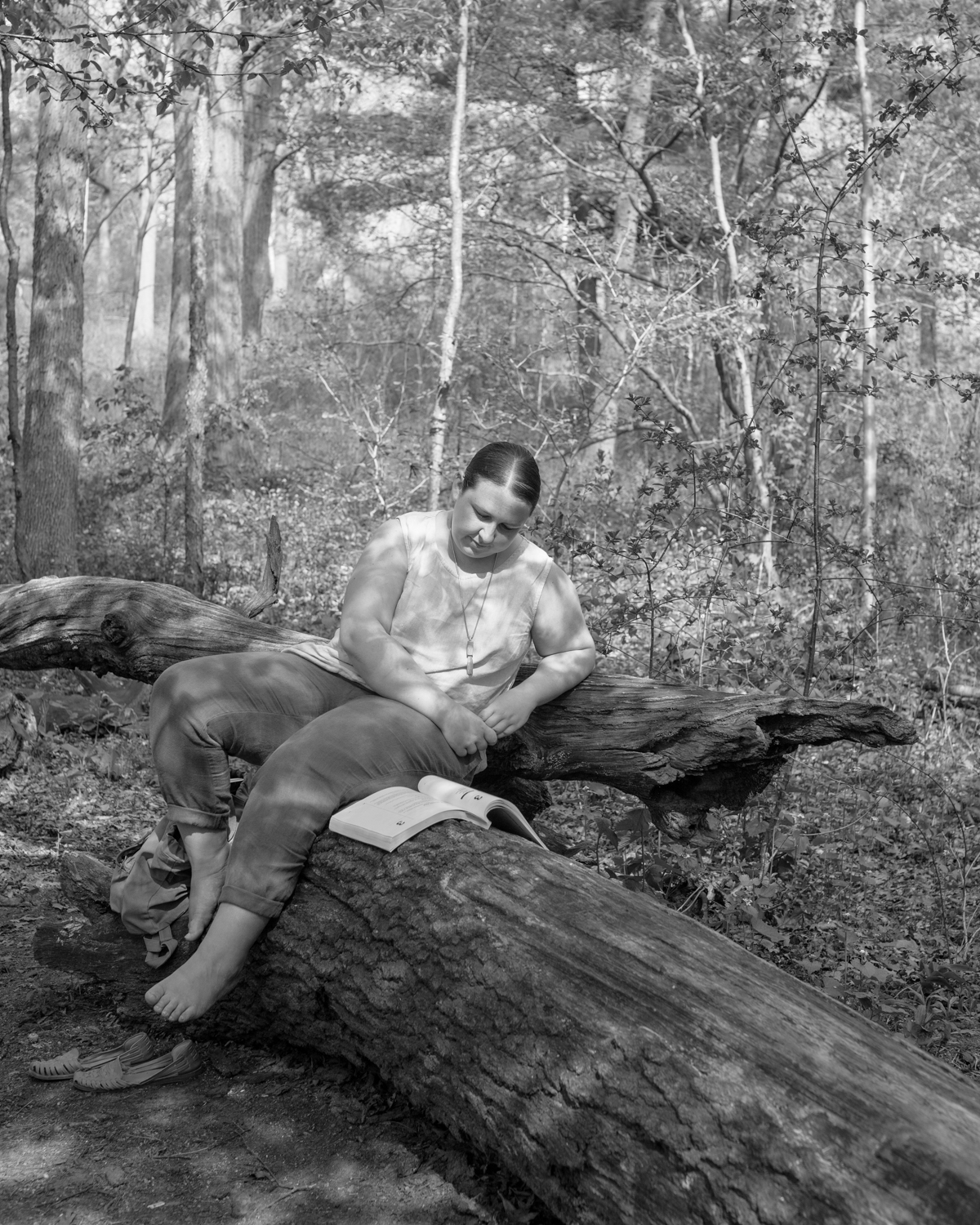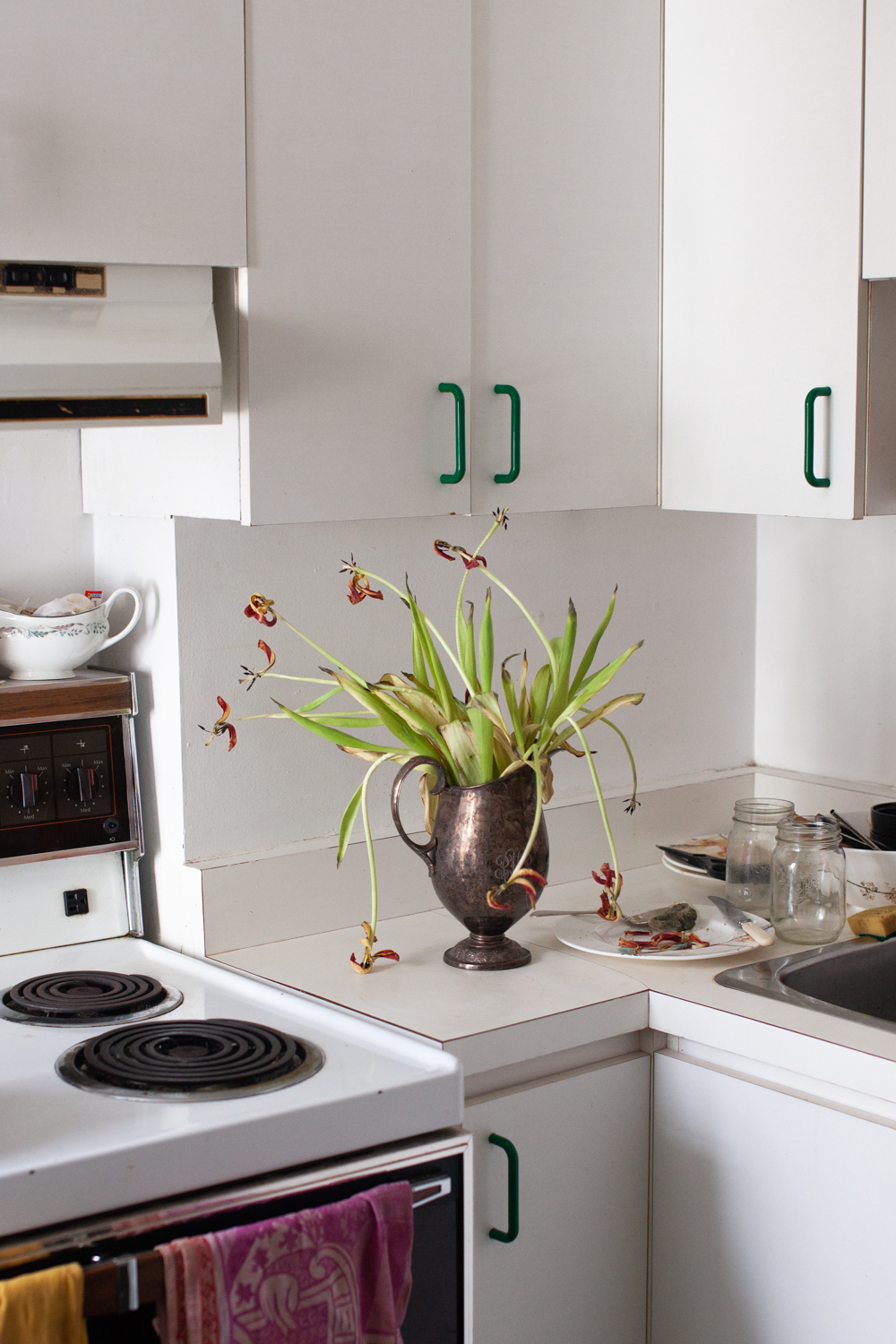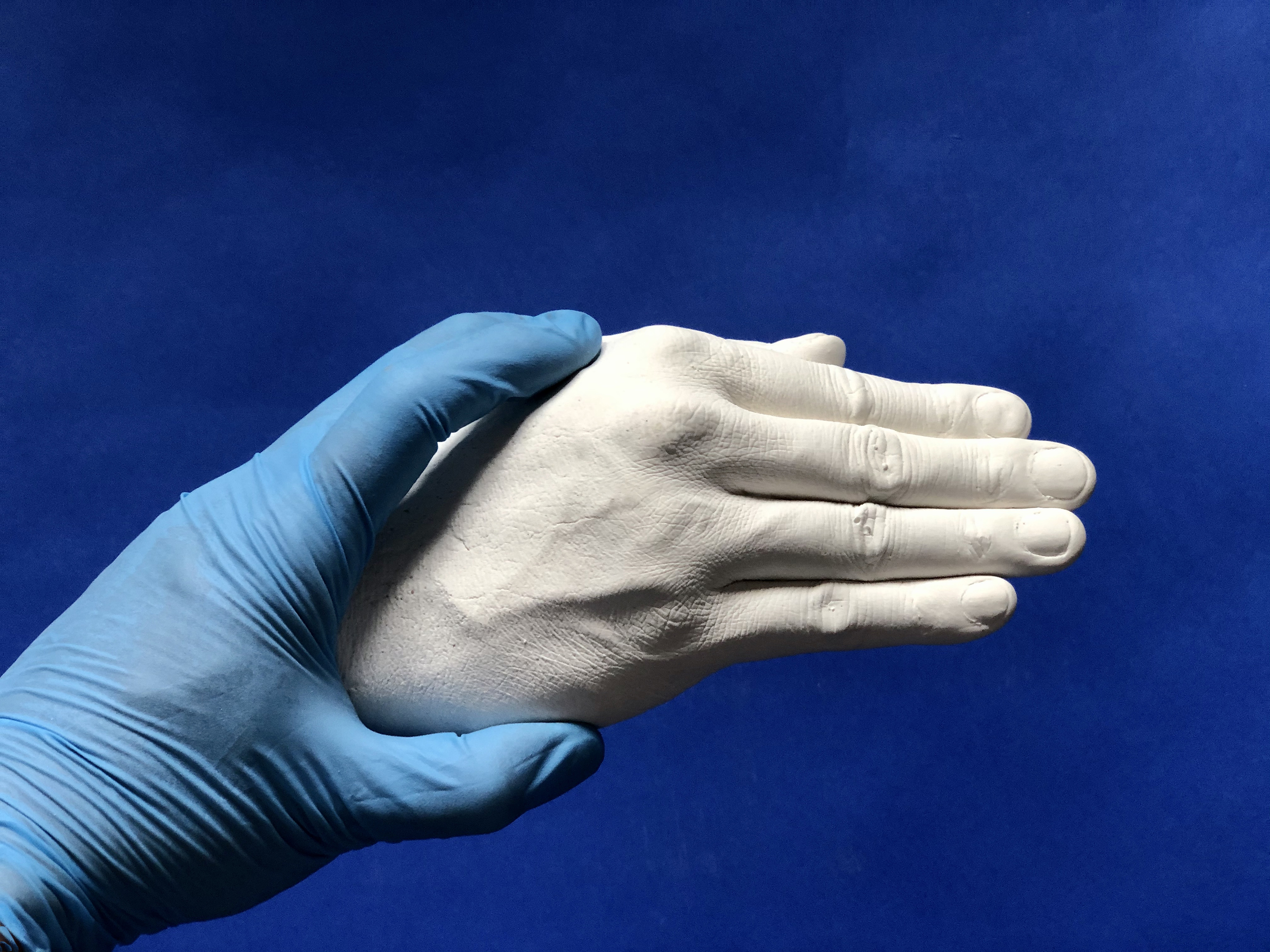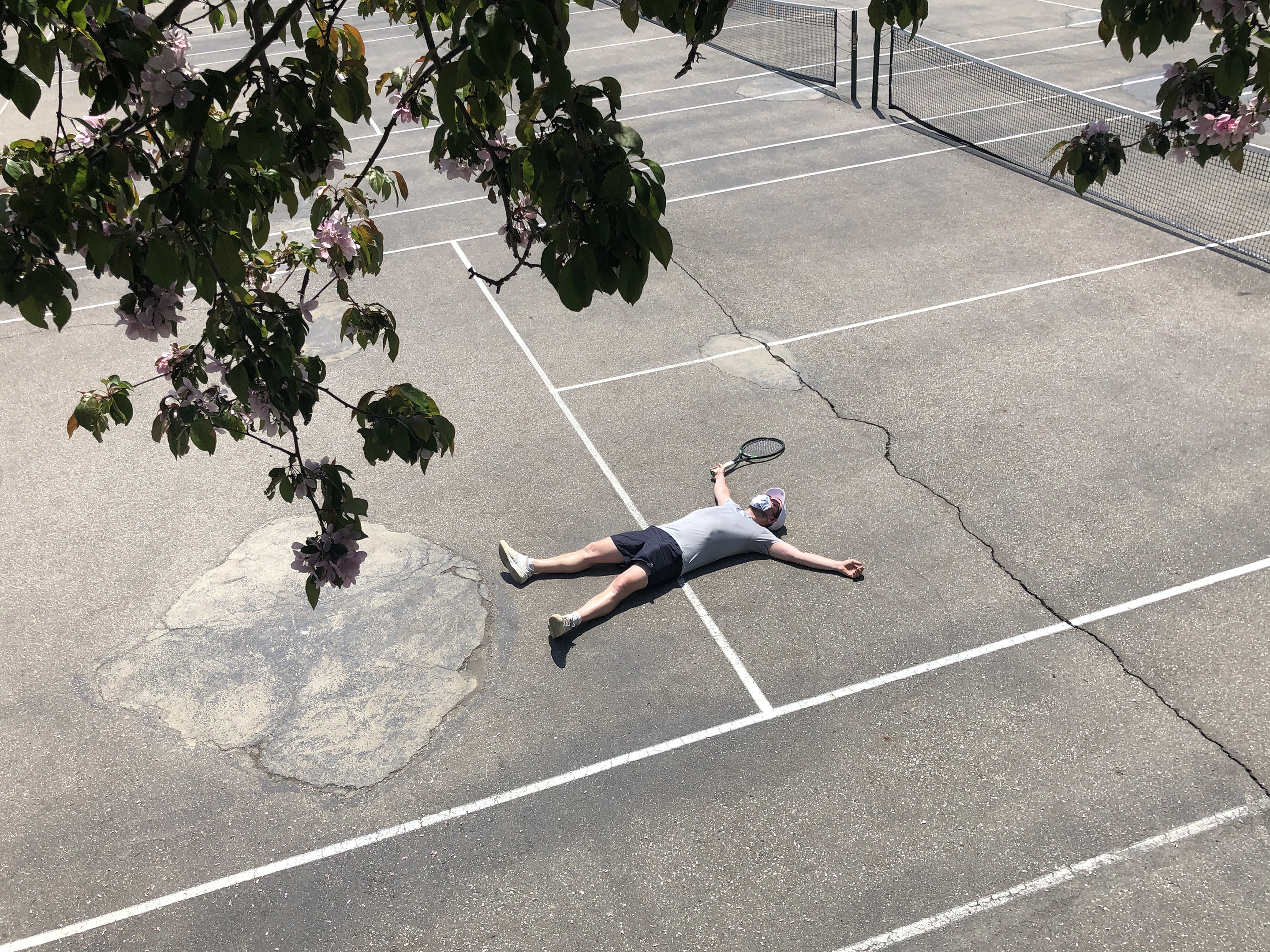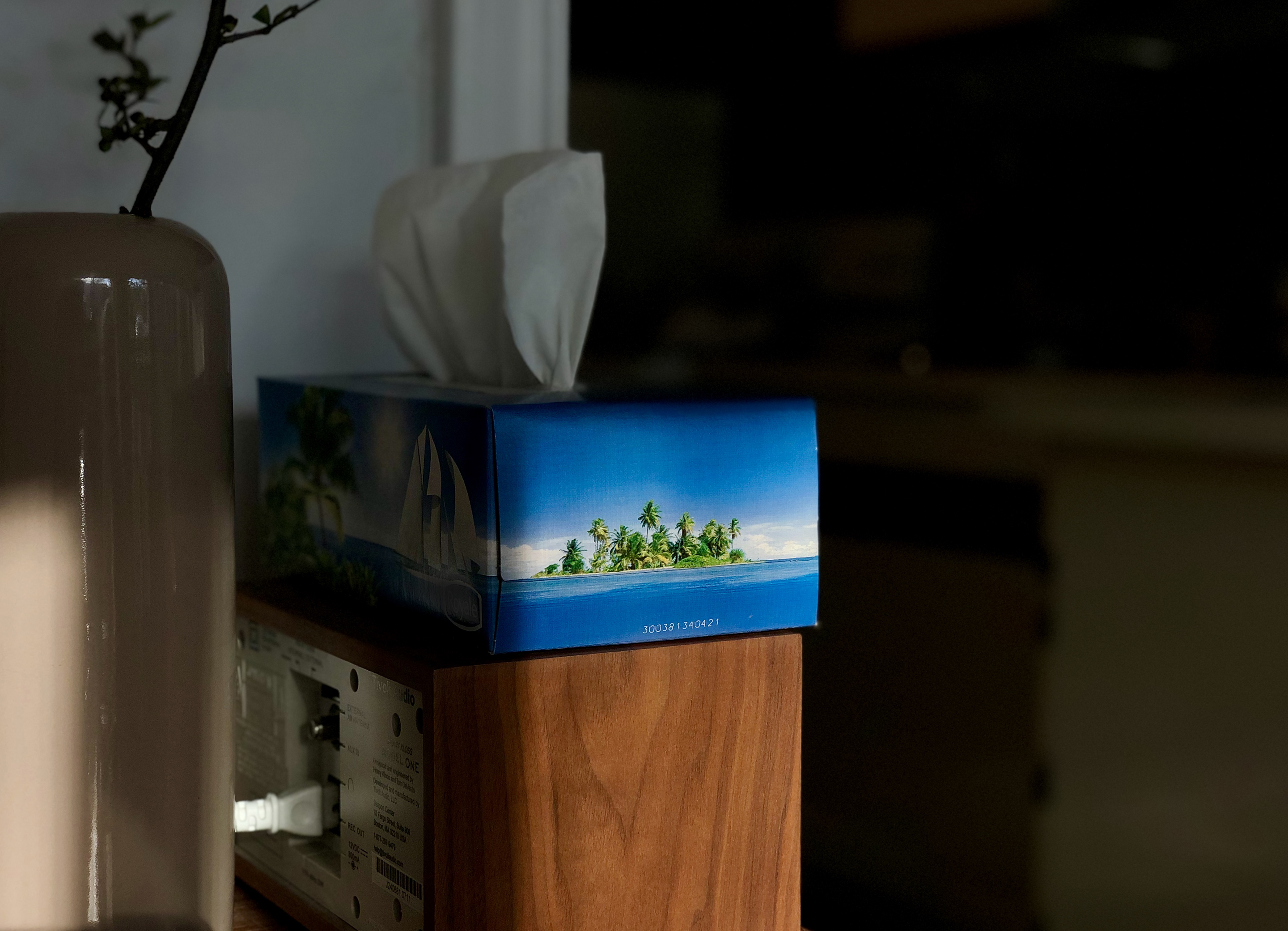It is with great pleasure that the OCADFA newsletter committee (Richard Hunt, Laura Lovell-Anderson, Surendra Lawoti, Bogdan Luca, and Maria Belén Ordóñez) present the observations, speculations, and hopeful propositions of OCADFA members in times of COVID-19. Composed of text, images, and sounds, this collection carries energies and perspectives that are uniquely tied together, and are full of potential for fostering solidarity, collegiality, collaboration, and dare we say, creative interventions and effects that point toward what is often overlooked and taken for granted. This collection is a lively record and digital archive made, designed, and produced by OCADFA members in the Faculties of Art, Design, and Liberal Arts and Sciences and School of Interdisciplinary Studies. Thank you to newsletter designer, Ali Qadeer, and in order of digital appearance, thank you to all the contributors: Anson Liaw, Tannis Nielson, Min Sook Lee, June Pak, Andrea Fatona, Angela Bains, Kestin Cornwall, Michael Lee Poy, Kathy Moscou, Marton Robinson, Barbara Astman, Kotama Bouabane, Kate Schneider, Meera Margaret Singh, Peter Sramek, Charles Reeve, b.h. Yael, Scott Everingham, Richard Fung, Ramona Pavilionis, Ilene Sova, Lillian Allen, Eric Nay, Rob Nicholls, and j.j. haladyn.
—
Our Labour in Times of COVID-19
This work is part of a broader engagement of illustrations that take on critical perspectives about the world around us. At OCAD University, students, fellow instructors, and staff have been coping with the difficult challenges caused by COVID-19; finishing classes and assignments, while coping with the stress and fear of a pandemic. Like a horror film that is dreadfully real, people continue to die and live in fear all over the world. COVID-19 possesses an insurmountable myriad of unknowns that have us fighting for our lives and livelihoods as we transition to new ways of being.
The illustration I created tries to capture the feelings I’ve had since the end of the Winter term and the realization that everyone around the world is living in many different ways with COVID-19. It now makes up the fabric of many societies.
In relation to completing the term at OCADU, each scene & situation depicted in the illustration suggests that the community that is OCAD will undergo major changes, unimaginable before the pandemic. The illustration also possesses a compelling positive energy scene-by-scene as it expresses how love and desire for connection and engagement is so much more precious now than in pre-COVID-19 times.
I enjoy combining various everyday life objects, scenes, and situations from memory and imagination; fusing parts together as a way to produce new and unexpected, yet also familiar, meanings. The goal is to ignite a spark of discussions, encouraging viewers to be engaged and appreciative of the world around them.
At the time COVID-19 was beginning to infect Canadians, there was an Indigenous resistance movement utilizing the hashtag #shutdowncanada: where the defenders of the land organized actions upon the railways as a means to purposely slow the flow of capital. The railway was chosen as a site of struggle because the resistance was cognizant of the fact that the best way to get any government to listen to our concerns, was through creating an obstruction to what government has always prioritized most-which is the economy. Ironically the flow of global capital has now been #shutdown by COVID-19 and the world is witness to the revitalization of nature because of it. Western science has been warning us about a variety of cataclysms that would arrive as a result of climate change. Scientists also advised world governments to listen to the guidance of Indigenous people(s) ecological knowledge- as a means of countering the developing crisis, because we’ve also been warning humanity against the destructive nature of this cannibalistic type of resource capitalism. Though the ‘developed world’ carried on consuming the earth’s resources, without heeding any of the warnings. They/the ‘developed world’ acted as if they believed themselves to be immune to the crisis/virus. And those who willfully remained ignorant or opposed the warnings and continued on with their misguided attempts to control/commodify/colonize nature can now forever be damned in history as the root cause of COVID-19. Will the governments of the world finally take course on the prescriptions proposed by indigenous knowledge and science and move toward a paradigm shift for the sake of humanity?
We shall see…
March 11, 2020 At the outset, COVID-19 presented as unpredictable and constantly evolving. But now, in the wake of China, Italy, Iran and South Korea, we already have a playbook on how the virus spreads and containment strategies that work. Canada’s response has been slow and our government leaders are under-reacting to a global pandemic. It is estimated that 30 to 60 percent of the world’s population will get infected. There is still little known about the virus and no vaccine. In the face of this crisis, what is Canada’s plan? Unfortunately, there isn't a comprehensive national plan. We have the private sector making choices on their own and voluntary cancellations. Across the country, the confusion is clear and Provinces are coming up with contradictory recommendations. At the airport, incoming travellers are invited to self-report. There is no national ban on large public gatherings. Italy is in lockdown because they took too long to build a plan. China now seems to have flattened the curve because the state forced self-isolation. But here in Canada, we have a new committee and are told to proceed with ‘caution’. This is a pacification approach.
I just received a message from an elected official that reassured me ’the risk remains low’. I do not believe this to be the case. There is real concern the spread in the community has already started. The Liberal government’s statements place a priority on ‘minimizing social disruption’. That is code word for economic disruption. Instead of calculating how much money will be lost, we need immediate steps to ensure there is not one unnecessary death. Why wait to take steps to protect people. Unless keeping things open to make money is more important than people’s lives?
Canadians need a people’s centred response to COVID-19, led by scientists and health care workers not neo-liberal economists. Temporary and immediate measures must be put in place and timely, accessible communication channels with Canadians need to be set up. Canada needs to be shut down to slow the spread of infection. All non-essential travel in/out of the country or domestically must cease for 30 days. Anyone coming with symptoms must be tested immediately. And people need to know where to get tested locally. Workplaces, schools and daycares must be closed. Anyone not working in essential services, needs to stay home and have the support to do so. Grocery stores, pharmacies and health centres will be points of contact, and they need to be given support to be points of information for people. Supplies of hand sanitizers, protective devices and test kits must be made readily available. South Korea set up the capacity to run 10,000 tests a day within days of the outbreak.
Canadians also need information and access to specific advice through properly staffed tele-health and public health services. Quarantine, crisis health operations, social distancing and rudimentary hygiene practice works. Outside of a vaccine, containment strategies are the most readily available & effective protections we have against COVID-19. But this won’t happen until it's too late because the ’social disruption’ will be too costly. This means the political cost is being carefully weighed, this is unconscionable. Lives are at stake.
I am fully prepared to batten down the hatches and work internally, within our communities, to protect our friends and family members. And the very first priority should be people who are most vulnerable to transmission or unable to practice the known protocols that work. We need to slow down the spread of the virus to win time for people to develop immunity, hopefully develop a vaccine and to prevent the health care system from becoming overwhelmed. What COVID-19 reveals is the pressing need to have a well funded comprehensive and accessible universal public health care system. Now more than ever, we need to ensure that access to the potential vaccine is affordable for all. Universal pharmacare would ensure private drug companies do not have the opportunity to speculate profitably on the roll-out of a vaccine.
The 1 Billion package announced by Trudeau needs to prioritize resources for those who will be hit the hardest. This includes people living in institutions—nursing homes, prisons, women’s shelters and homeless shelters, those who cannot control their space and for whom ’social distancing’ is impossible, like migrant workers. People here are forced to live in crowded conditions, many are elderly and managing chronic health conditions with scarce resources. They need resources and staffing assistance to practice precautions to stay as safe as possible. Many health care workers are poorly paid, who will replace them or support them if and when they become too sick to work?
The federal government must immediately connect with indigenous leaders to identify their needs and provide assistance. We’re told repeatedly to wash our hands. Many Indigenous communities are on boil water alerts and do not have access to clean running water.
Self-isolation is not practical unless funds are provided for everyone who needs them in order to stay home. People will not stay home when they should or for as long as they should, if it means they cannot feed their families. The federal government should use our national EI program to provide fast relief to everyone who needs it, including those who are currently ineligible, at levels that actually reflect the cost of living.
Anyone who is left out of emergency planning is most at risk, and that leaves us all at risk. Our very first priority should be people who are most vulnerable to transmission or unable to practice the known protocols that work.
In times like this, we need leadership that is willing to make the tough decisions no one wants to make. The attitude right now seems to be ‘let’s keep the economic wheels on as long as we can’. Why do we have to wait until the number of cases get to a certain point? We’ve seen what happened in China and Italy. Why is Canada going to be any different? We hear the message: ‘don’t panic’. That is underestimating the intelligence and capacity of ordinary people. It’s not panicking to retreat from transmission sites. It’s sober, sound and a reasonable response
We need to be acting as though we are in the middle of a pandemic. Because we are. We need to suck it up, with the hope of averting a larger crisis. We need to start talking about solutions and working together to defeat COVID-19, by pushing the government to act.
In this short video, we see the range of what is considered essential, bankers and maintenance workers, and we ask what defines the essential service in our society. It points out the fact that many of the people who were often invisible in their labour and roles became visible during the nation-wide lockdown due to COVID-19.
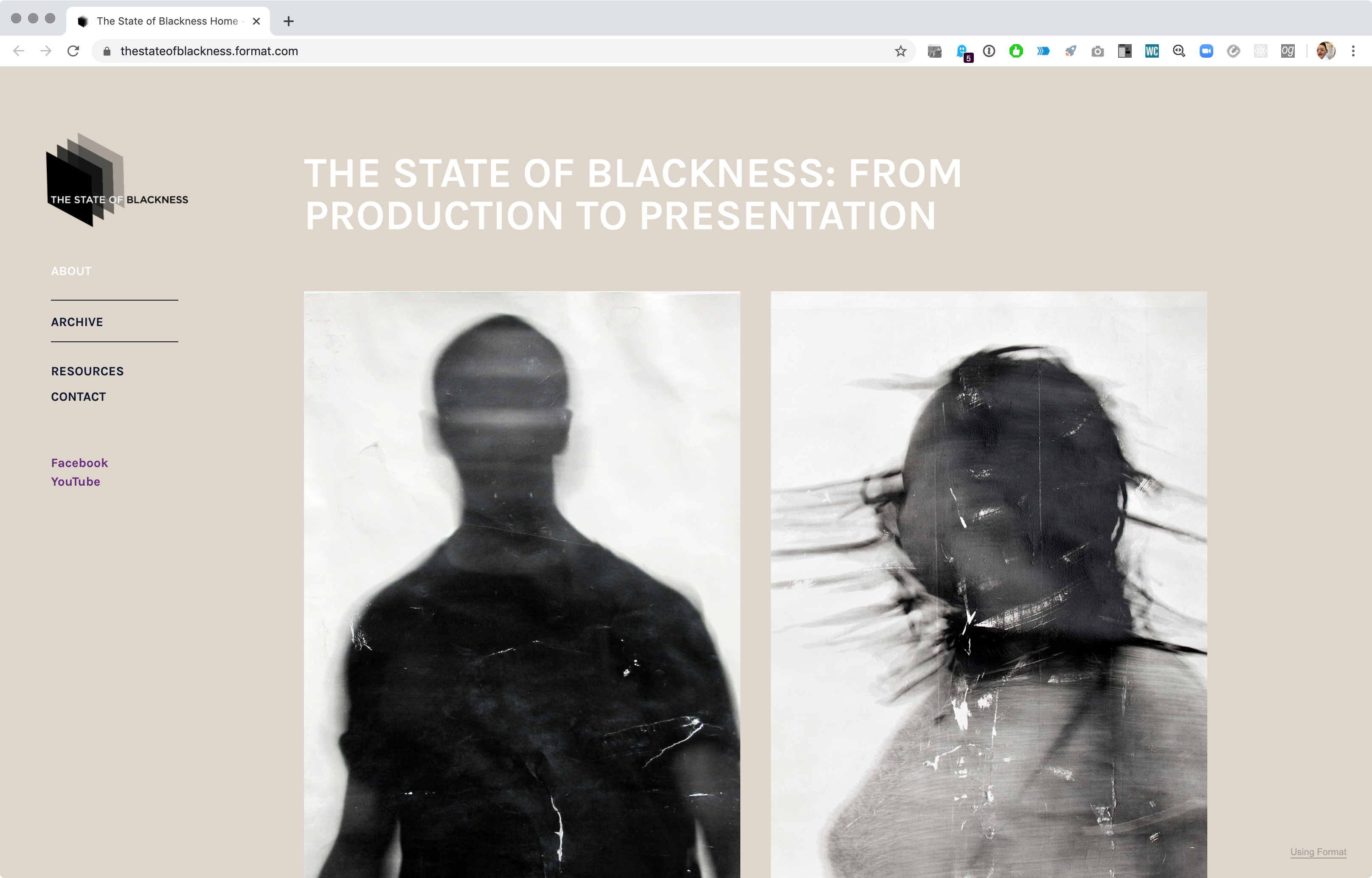
The State of Blackness: From Production to Presentation website serves as an archive of the activities of a conference of the same name that took place in 2014. The State of Blackness: From Production to Presentation was a two-day, interdisciplinary conference event held at the Ontario College of Art and Design University, and Harbourfront Centre for the Arts, Toronto, Canada. It brought together forty-two (42) artists, curators, academics, students, and multiple public participants to engage in dialogue and, in effect, problematize the histories, current situation, and future state of black diasporic artistic practice and representation in Canada. The site also serves as a repository for information about ongoing research geared toward making visible the artistic production and dissemination of works by Black Canadian cultural producers.
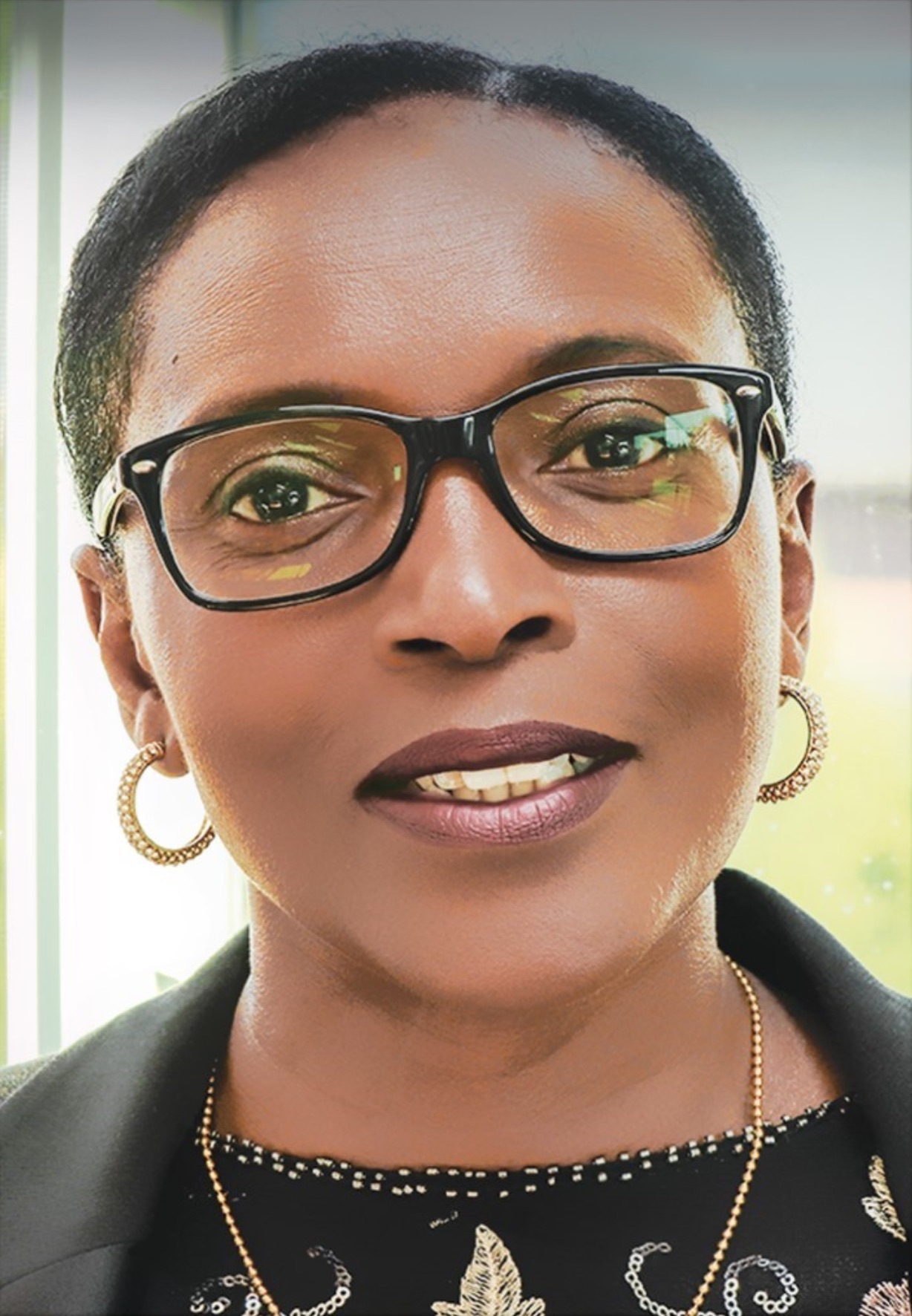
Angela Bains is a Co-Founder and Strategic Director of TransformExp, an award-winning design firm. Originally from the UK, Angela has over 25 years' experience in the design industry working on social change causes, including the Free Nelson Mandela Campaign and commercial accounts including; BBC Television, Swatch Canada, Westinghouse Canada, and The Ritz-Carlton. She has been invited to speak and host at the Association of Registered Graphic Designers (RGD) – International DesignThinkers Conference (Vancouver & Toronto). Most recently, Angela’s expertise was broadcast on CBC and CKNW 980. Angela has taught Strategic Design part-time at the British Columbia Institute of Technology (BCIT). She has been honoured by her students through six consecutive annual nominations for the BCIT Teaching Excellence Awards of which she has won three times and in addition, she has been nominated nationally for the RGD's Canadian Design Educators Award of Excellence.
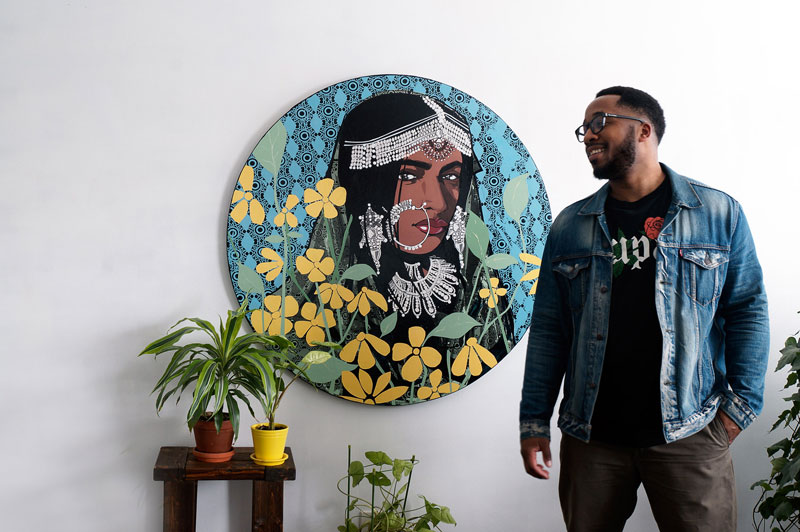
Kestin Cornwall grew up in the Windsor Ontario area. In 2001 he moved to Oakville, Ontario to begin his training at Sheridan College Institute of Technology and Advanced Learning.
Over the past ten years, Cornwall has focused on creating relevant progressive art. Cornwall uses images to explore the notion that culture, entertainment including film and other media, shape the mass public perception of black people and people of colour in North American culture. Cornwall critically charts current political, social, and economic landscapes with compositions brimming with references to media, popular culture, music, and art history.
Kestin Cornwall lives and works in Toronto

Michael Lee Poy will be teaching in the Environmental Design program. He is an Afro-Caribbean artist-activist and architect in Trinidad and Tobago. His practice and interests are centered on post-colonial Caribbean design and fabrication in the festival arts – especially Carnival. A graduate of Pratt Institute of Technology in architecture (B. Arch.) and the Yale Graduate School of Architecture, Environmental Design (MED), Michael aims to use interdisciplinarity to augment the innovative, creative, and collaborative process of design.
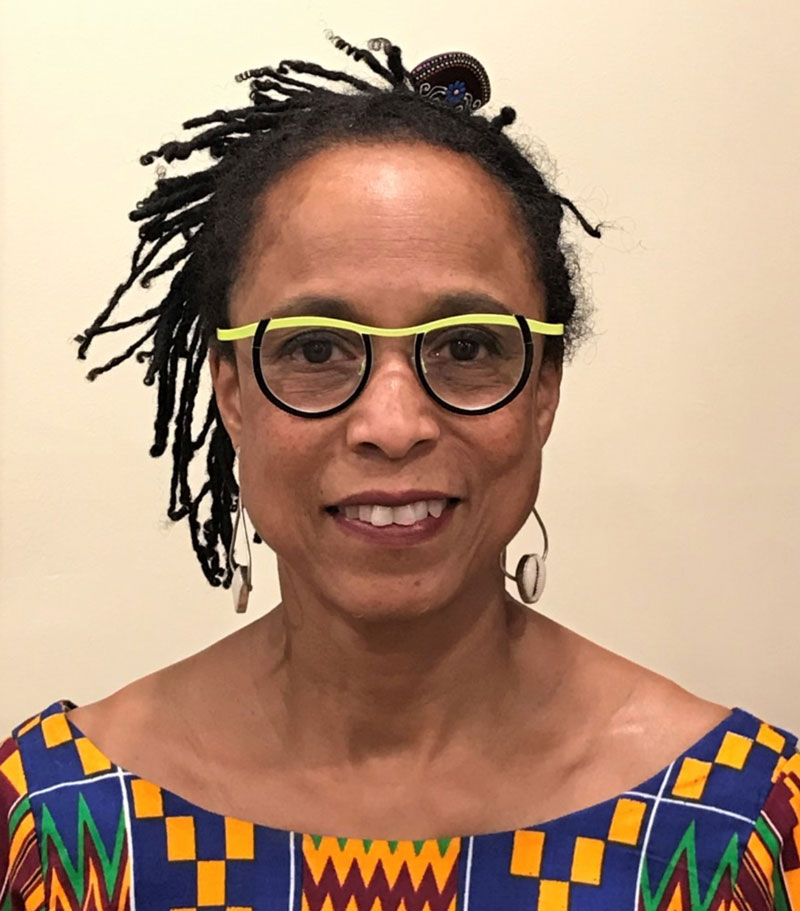
Kathy Moscou’s background is eclectic and unique, merging visual arts and health. Her lived experience, born as an African American, informs her art, focus on Black cultural aesthetics, contemporary design for social justice, commitment to the Black community and choice of research—which focuses on equity and empowerment of Black and Indigenous youth in Canada, the United States, and across the African diaspora.
Kathy’s experience contributing to the education of post-secondary students and exhibition history span more than 20 years. Her Ph.D research of pharmacogovernance and comparative health policy addresses equity in drug safety and governance to foster healthy communities. The representative stories in her art, deeply rooted in Black cultural traditions, explore contemporary issues of racism and identity by challenging viewers to see and think beyond contemporary stereotypes, the framing they put on the world and which the world places on them. She uses design, color, form, and symbols to communicate concepts of Kujichuglia (self-determination), Black cultural pride, resilience, agency and empowerment. Her work has been exhibited in Art Gallery of Southwest Manitoba, Brandon, Royal Ontario Museum, Toronto, M. Rosetta Hunter Gallery, Seattle and the Bellevue Art Museum.
Kathy embraces a human-centered philosophy of design that empowers individuals or communities seeking to address specific issues to contribute to or collaborate with the designer/design team in designing solutions.

Costa Rican artist Marton Robinson has an interdisciplinary background informed by his studies in both Physical Education and Art and Visual Communication. He completed an MFA at the University of Southern California. Robinson's art, which is informed mainly by African- American traditions, challenges the conventional representations of black identities in art history, mainstream culture, and the official national narratives, especially those of Costa Rica. With an often ironic and rhetorical take on the constructs of racism, this practice endeavors to confront the hierarchies and conceptions inherited from colonialism in order to subvert the mindsets and prejudices ingrained in our social experience. Robinson's work exposes the nuances present in the Afro-Latino experience, enriching the critical discourse of contemporary works of the African Diaspora.
“Enough is enough,” declared Justin Trudeau in late March. “Go home and stay home.” Apparently he liked the sound of that particular bite, since he also tweeted, “To the people who seem to think they’re invincible: You’re not. So go home and stay home. You’re not just putting yourself at risk, you’re putting others at risk too.”
On its surface, his point is fair. As with many communicable diseases, the spread of COVID-19 would slow or stop if nobody went out. Leaving aside the unlikeliness of that happening, though, Trudeau’s assertion has problems. According to the Centers for Disease Control, “[T]he the period of infectiousness for COVID-19 [is] not yet known” (and the World Health Organization concurs). So, without robust testing, we have no idea how long people should stay home. And that raises a second, more urgent, question: what did Trudeau mean by “home”?
For sure, many people can choose to stay home or go out. But Trudeau’s assertion embraces normative assumptions that themselves contain a cruel irony: those for whom leaving “home”—in its most problematic forms as seniors facilities or prisons, for example—is either difficult or impossible are also those most vulnerable to COVID-19, precisely because of where they live. Conversely, even housing situations that look, from outside, like the normative home assumed by Trudeau’s comments can have serious problems. As Jacqueline Rose noted, the UK’s Domestic Abuse Helpline has experienced a 25% uptick in calls and, from 23 March to 12 April, the UK recorded 16 domestic abuse killings, more than triple the usual rate. Meanwhile, Canada’s situation may be even worse: Battered Women’s Support Services reported at the start of May that the previous 36 days had seen nine cases of lethal domestic abuse.
It shouldn’t surprise anyone that this crisis affects equity-seeking groups disproportionately. Just how disproportionately, though, might push us to ponder its implications for the academic community. Along the axes of gender and sexuality, for example, issues linked to normative assumptions about home as they play out in our corner of the world emerge quickly. With college campuses closing, many queer students returned to uncomfortable or unsafe situations—which they attended university at least in part to escape—and thus demand is spiking for campus-based LGBTQ support services. On the faculty side, early data suggests a gender skew in the impact of the COVID-19 crisis, as female professors take on increased loads at home and their creative and scholarly productivity declines.
Two dangers lurk here. Short term, if we don’t resist these trends, drop-out rates from vulnerable student populations will rise significantly, and we’ll lose faculty—especially junior colleagues—from equity-seeking groups. Longer term, the concern is that stop-gap measures adopted during this crisis will be normalized: burying ourselves in course preparation this summer will morph into an expectation that we should do so every summer; academic leadership taking decisions unilaterally in order to “pivot” to an evolving threat will reify into a permanent weakening of collegial governance; emergency remote learning with reduced TA use and limited support for personal engagement between students and faculty will become standard procedure.
These perils vary in intensity between regions, institutions and programs. The shakier an institution’s finances were before the crisis, the more pressure it will feel to adopt such measures and then to make them permanent. Algoma University will be hit harder than Deep Springs College and such differences will be positioned as inevitable. However, as Thomas Piketty says in the opening to his electrifying new book Capital and Ideology, “Every human society must justify its inequalities”—by which he means, while inequalities rarely are inevitable, they almost always are framed to make them seem so. Efforts to justify the inequalities highlighted by the COVID-19 public health crisis already have begun. But so has the work—often university-based, often featuring students, faculty and admin—to reveal those justifications as the exercises in bad faith and false consciousness that they are, and to say in our turn, “Enough is enough.”
Stacey Donen, programmer at the Royal cinema, invited a number of filmmakers/video artists to make work for his series Greetings from Isolation. I was going to make a video titled Covid Cured Me, about my obsession with Trump and his enablers, but instead…. Isolation ABC: there is so much to do in isolation! Especially thinking about everything else...
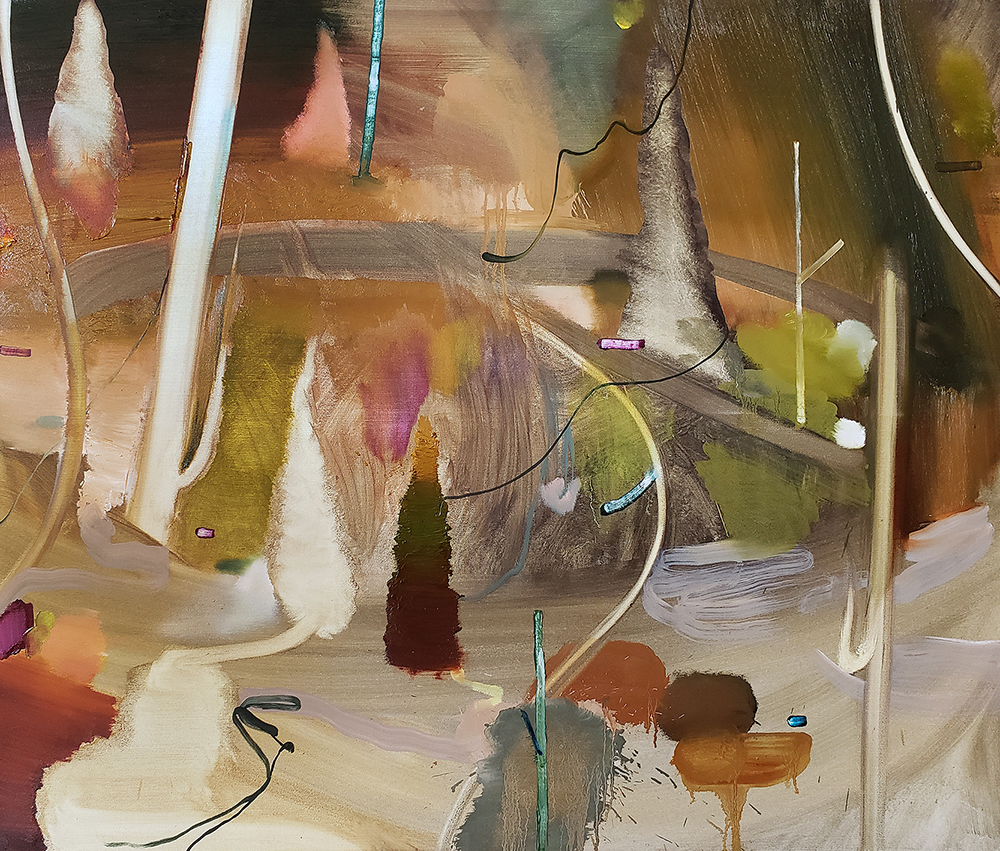
I had created the title for the show Smooth Sailing back in December, as I was going through certain personal and business relationships that were in fact, turbulent. It was a tongue-in-cheek way of relating the act of seeing and making a painting with communication, personal space, and the problematic ways certain perspectives can be misconstrued. I use sailing—a mostly leisurely activity of privilege—as a metaphor for imagining that everything is alright. Considering my state of mind at the time, and with the sudden introduction of COVID-19, everything actually wasn't. These works use the leisure of sailing with other possible outcomes—torn sails, sunken masts, lost treasures, fallen sea life—with areas of hope, spatial illusion, and the discovery of a fictional environment. They offer me points of exploration and growth, in life and the act of painting.
I suppose I am attempting to make work, using abstract language, about the uncertainty we face as people and artists. Others have faced incredibly heartbreaking situations, which are immensely more important than having my show delayed until September (from an early June opening). COVID-19 has allowed for more time in my studio, and I feel very fortunate to have not been seriously affected.
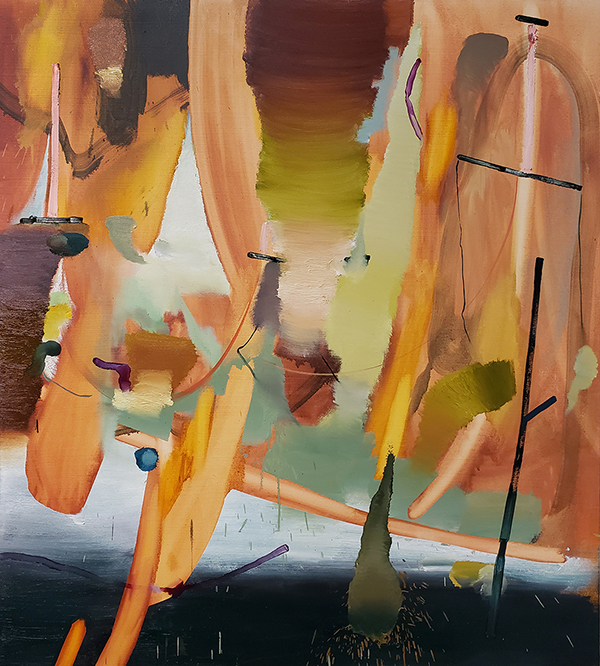
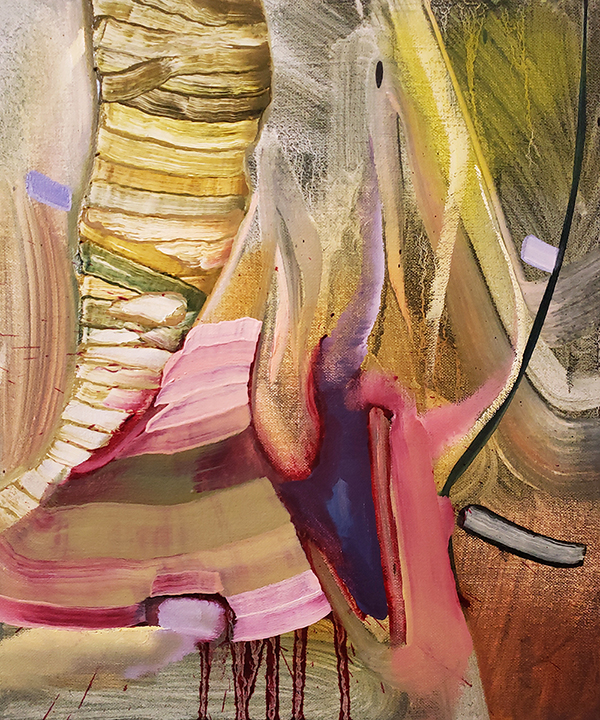
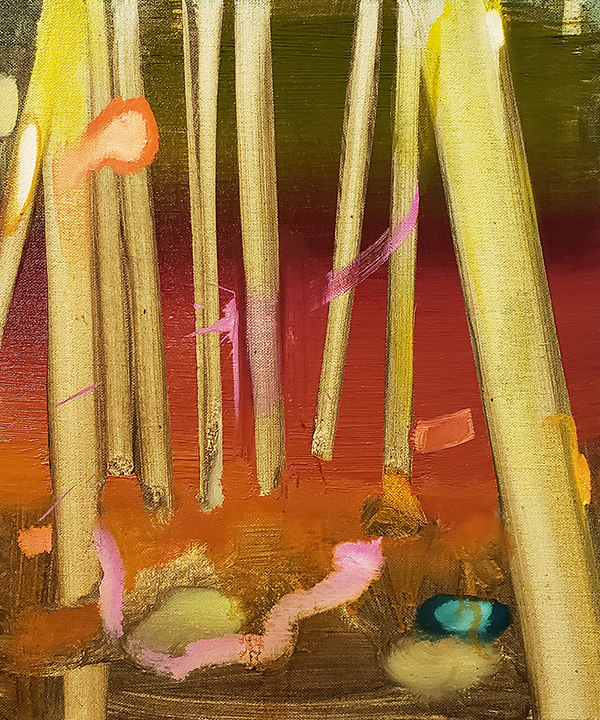
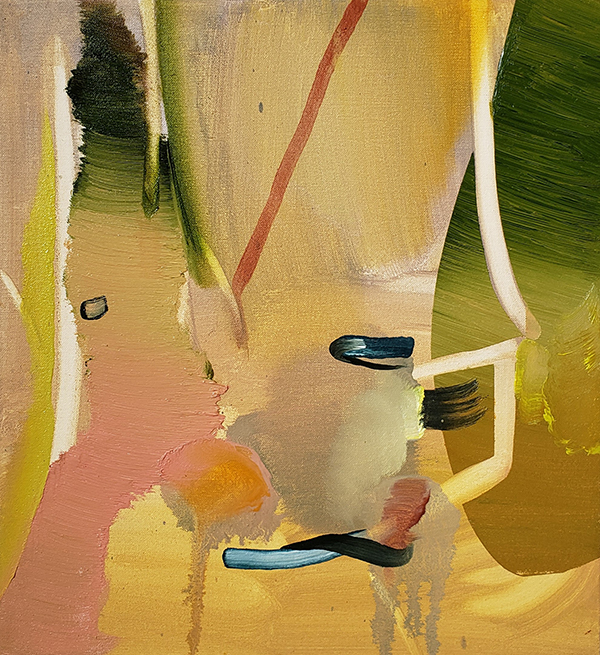
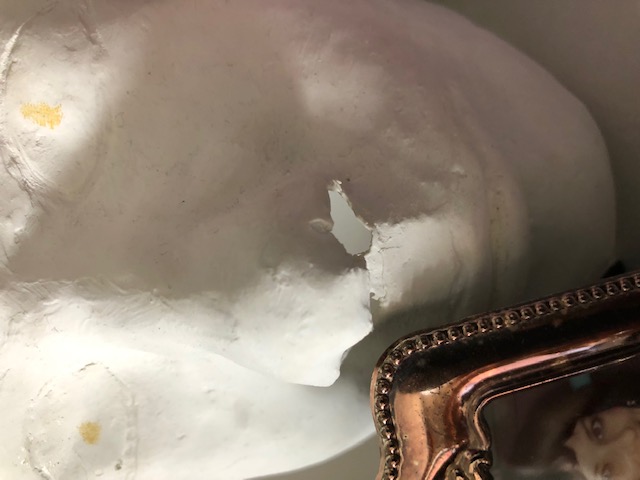
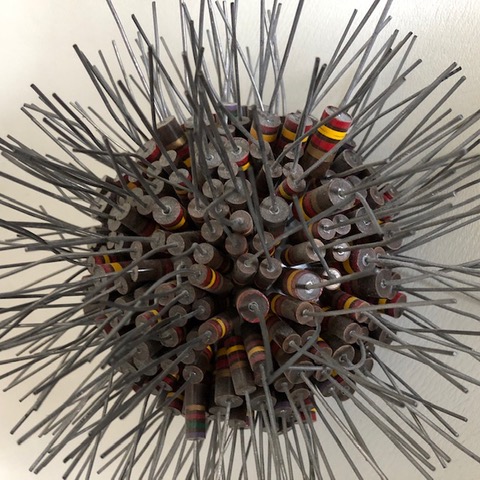
I examine the breath in relation to the pandemic situation today. My current body of work is titled Pneuma which was inspired by my readings of Marcus Aurelius, the Roman Emperor (AD 121-180), who wrote Meditations. Based on the philosophy of Stoicism or Stoic thought, pneuma pertains to the soul, the vital spirit, or creative force of a person or from the Greek origin “that which is breathed or blown.”
Waking up to what I thought was a nightmare, soon became a reality. COVID-19 was here and domineering in every which way. I recall pondering about the spirit of life, whereby Henry Miller communicated, “There is nothing wrong with life itself. It is the ocean in which we swim and we either adapt to it or sink to the bottom. But it is in our power as human beings not to pollute the waters of life, not to destroy the spirit which animates us.” I asked myself, how will teachers handle this new world?
As a Sessional instructor, regardless of what pandemic restrictions there were outdoors, I was stuck inside trying to reconfigure and redesign the course pedagogy to strictly run in a virtual world with glitches and all. With some support, things slowly started to flow. In my first class I observed that when looking intently at a computer screen the spirit which animates us all seems to disappear. Where is everyone? At times I felt like I was simply chatting to myself, the blank screen, so terribly impersonal. I needed self-assurance, so I asked if anyone was still with me and if they would like to share their screen. Of course, there are pros and cons, but the most important thing in this virtual arena is to be able to keep our students focused and interested. To maintain that is still the challenge today.
As more time goes by the virtual world becomes more familiar and may even become the norm. My exploration and vision depicts life between the layers of time, the unknown and the breaths we take. Through the medium of photography and sculptural objects, I strive to convey and capture a reflection of the pandemic moments that portray our existence today. New tools will make things even more accessible and let’s hope that we will not be replaced by lifeless, non-breathing robots.
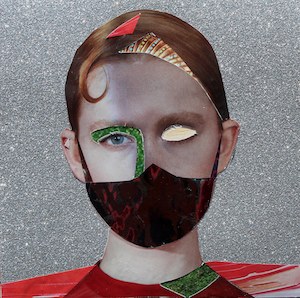
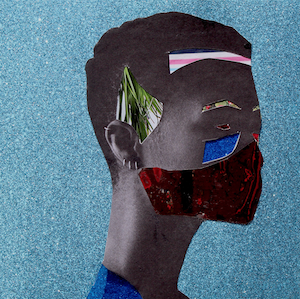
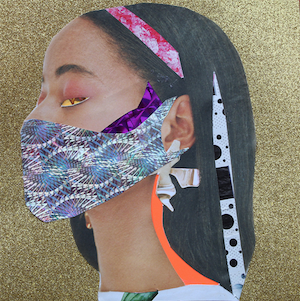
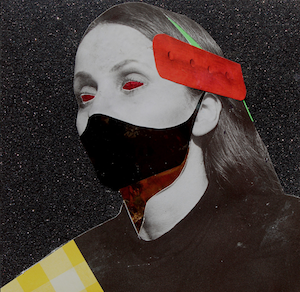
Our former eyes have been replaced, and the curtain pulled back on the inequities that we didn’t quite FULLY see before; rampant ableism, deep racism, vitriolic sexism and complex classism.
News and news feeds are full of surreal death stories and devastating condolences, read and consumed through these new eyes of truth; all laid bare by COVID-19.
We look with different eyes that are metallic and shiny. Eyes that haven’t yet been formed; neweyes that no longer know how to ‘look to our future” for hope and possibilities. Eyes swimming in pools of uncertainties brought by COVID-19.
Our Instagram lives and our materialistic obsessions are now unimportant and breaking apart at the seams. Nails unpainted, unkempt hair with new natural roots growing out of our scalps. Spring fashion lines left on the rack, are locked up in retail stores collecting dust. All deemed unimportant by COVID-19.
We are left to self reflect, face ourselves, slow down, and toss and turn at night with vividcrackling dreams alive with messages screaming from our subconscious. A newly formed focus on symbols and images, not yet fully understood, brought to you by COVID-19.
Our connection to nature and the world around us is only now beginning to be understood. We thought we were separate, but now we know we are one. We were never masters of this universe because nature was never ours to master.
Fractured plants, roaming animals, the unpolluted sky, the contaminated dirt, seeping in and out of our bodies. Sequestered in our homes, our minds begin to change, open up, and fracture with confusion; scattered with former motivations that are no longer valuable.
We float in a sea of unknowns, covering our faces with psychological and real masks. COVID-19 is a virus that makes reliability and safety unknown. In a sparkly shiny isolated dreamy space—how will we prophesize our new future and manifest in an uncertain one?
When I was growing up in Spanish Town Jamaica, people had two different types of currencies in conducting commerce; you could pay in cash for something or you could trust it. “Mi madah sen’ mi fi trust a loaf of harddough bread and some butter ‘til Friday.” Trust as a popular currency and was both transactional and relational; the way it should be. In some communities it was more popular than cash. Trust was metaphysical in the way that it moved through space and time to materialize goods to sustain life. There was a rhythm and recurrence to the cycle of trust and predictability to the promise of payment. For these folks, the shopkeeper would just make a mental note. For those who had a harder time of meeting their basic needs, the shopkeeper would keep a kind of ledger. It was such an honour system that those who were on rock-hard times and couldn’t deliver on the promise to pay, were cause for great sympathy and even charity. What was owed would be suspended indefinitely or simply forgiven and in addition would be given what they needed for free. If you messed up, the consequences were great. Simply, you would not be given any more credit; your currency of trust could not be used again for anything or with anyone. You felt ashamed. There was an instinct that told you that you were part of an ecosystem and you had damaged it.
In a rum shop where trust had been broken, a sign warned; “In God We Trust, All Others Pay Cash”.
I remember a time when a person was as good as their word as a societal norm. Our need to trust and be trusted was once fundamental to who we are as individuals and as a society. Accountability was a badge of honour. I would venture to say that between immoral priests, crooked politicians and falsehood in advertisements, the public notion of trust took a beating. And not to overlook dishounourable authority figures, unconscionably greed of business cultures, the Madoffs of the world, alternative facts, and the all too commonplace Hydro-One type debacles further impugning notions of public trust and normalizing its demise. The private notions were always complicated and contested, what with the rate of infidelity, incest and sexual abuse all from the very people one should trust the most. A loss of private and public trusts is psychic abuse.
I am reminded of an anecdote of a man who had fallen down a cliff and had grabbed onto and hung from a branch of a jutting root, dangling above jagged rocks. He pleaded; “God, I know you’re up there. I have complete trust in you, please tell me what to do.” After a short electric pause a god-like voice boomed back, “Yes, son it’s me God, just relax and let go. You’re gonna be alright.”
The man glanced down at the eager jaggedness of rocks dozens of feet below then frightfully tightened his grip and shouted in an existential desperate tone;
“Hey, is anybody else up there?”
In some ways, I think that is where we are in the world today.
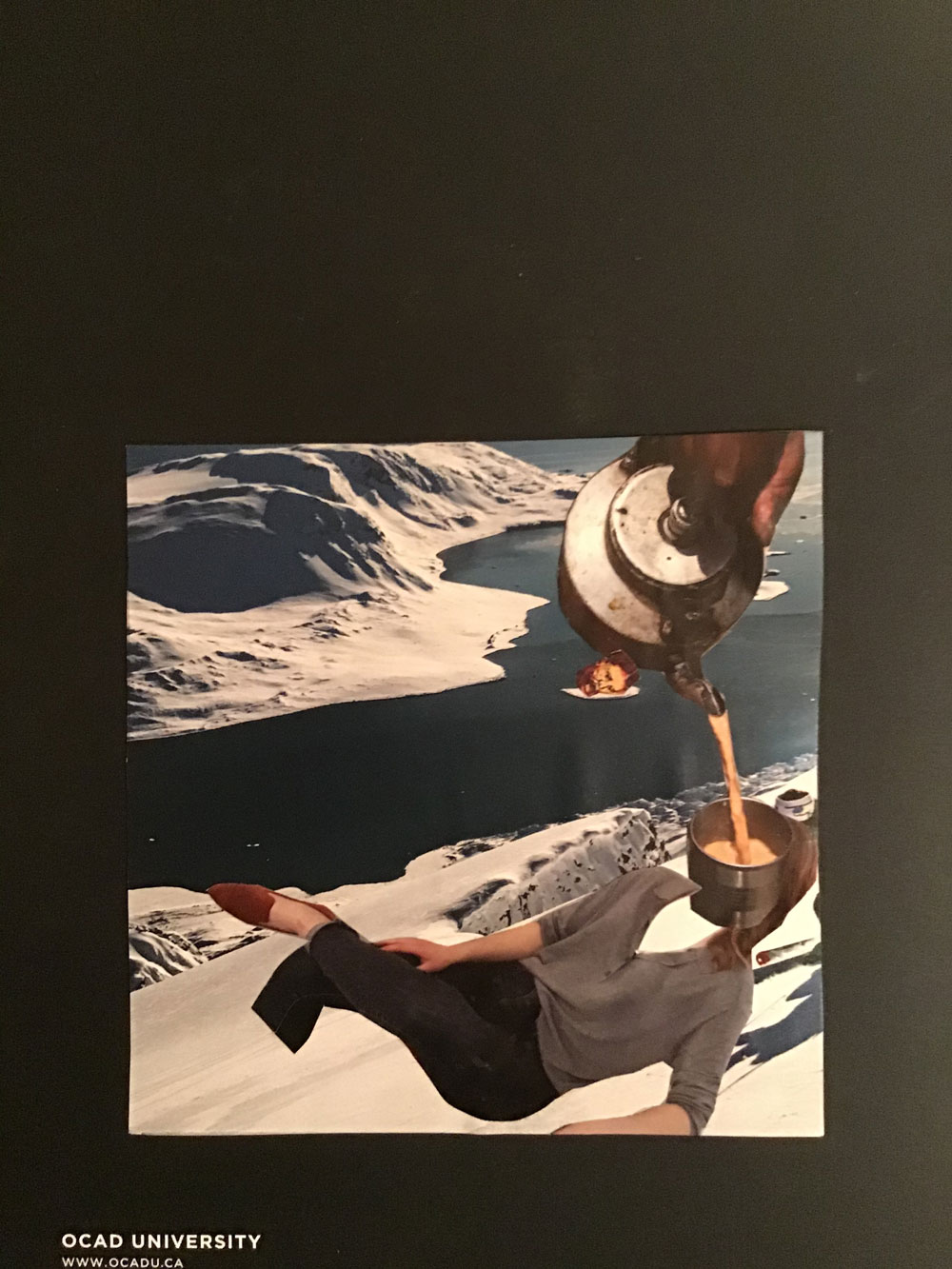
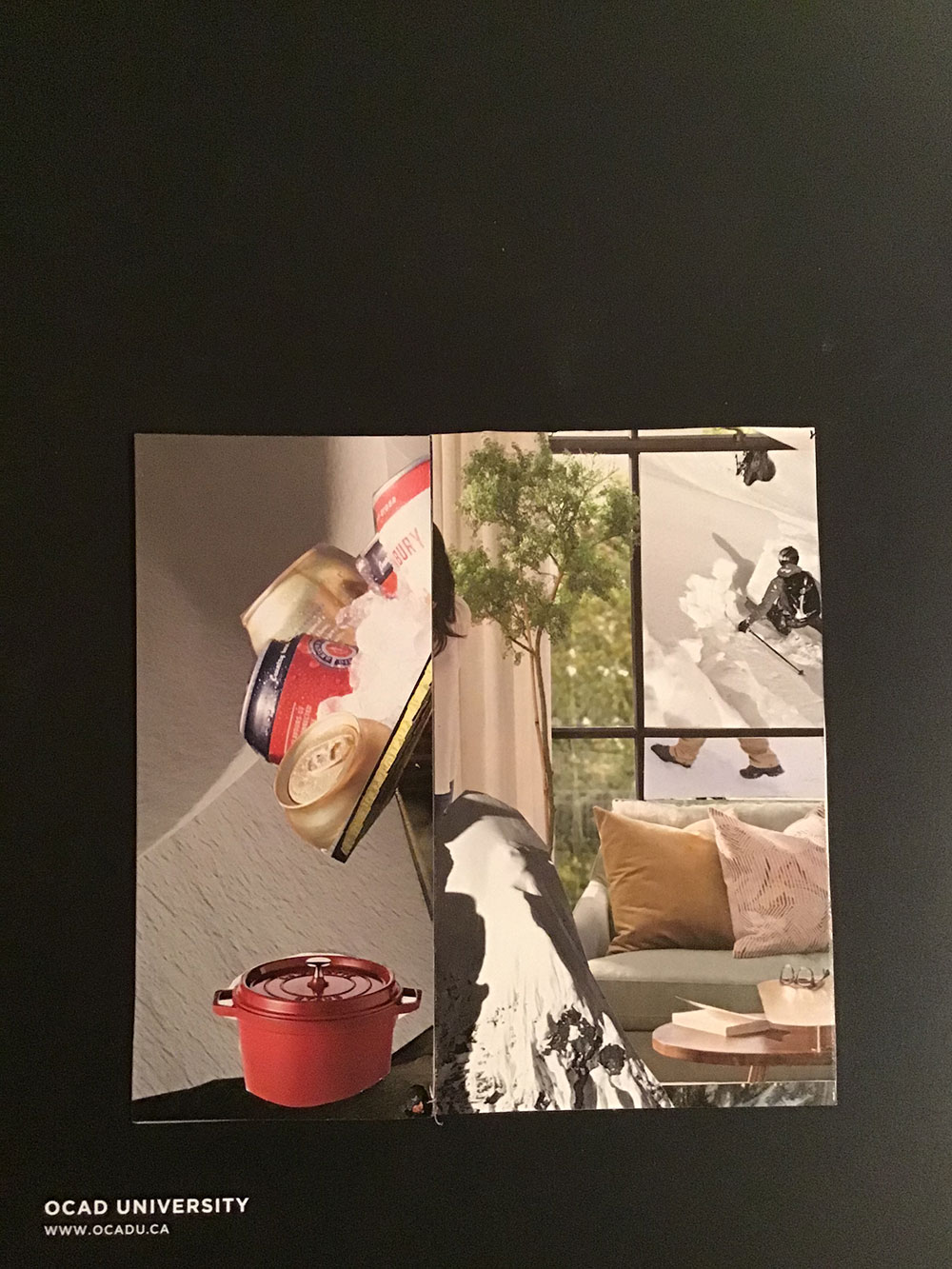
Trapped in my very small house with my family while swimming in a never-ending sea of baked goods, booze and ambiguity in the early days of the lockdown, I made these in response to a request for Covid-themed art from an art gallery in New Mexico about a month into the plague. I think they may have posted them in some online exhibition, but I forgot to even check or care. I have never been able to remember my dreams, but can tell that they had gotten much weirder with Covid. Maybe that was my motivation? These collages are cobbled together from airline magazines, from the days when travel was possible, LCBO magazines and other cooking magazines that were waiting for the recycling bin. A month later and a few extra pounds later, the dreams continue as does the baked goods, booze and ambiguity. Trapped.
As the pandemic began in March 2020, I like many people, felt an overwhelming sense of fear! Reminded of historical pandemic events on the planet and the sobering reality of the current COVID-19 was quite debilitating, especially at the onset of it.
Creating art during these times is a means of therapy for me and a way to process the situation that we are all in. In mid-March a friend of mine had posted an image with text on social media that spoke to the improvement of the environment by result of countries around the globe going into quarantine. I felt this report of our planet improving with a lack of pollution and over population to be very inspiring whilst the pandemic swept the world!
I decided to take a moment to pivot from my usual practice as a painter and further explore video, as a means to create a narrative art-work that would utilize vivid colour accompanied by original electronic musical compositions to the tell the story of our improving planet. In turn I created a fictional Television network and channel I dreamt up called the PRVNCL Network/Channel 22 News; a short episodic series that covers the positive aspects of our planet and how people are responding with optimism during a time of crisis.
Inspired by television of the past my palette echoes SCTV and the imaginative visual effects work of Robert Abel who worked on the original Tron movie. Stylistically my video project uses humour and a psychedelic visual approach appearing as though it came out of a bygone era.
having carefully weighed the pros and cons you decide to go ahead and consider the university’s request to teach your course online let us assume to keep things simple – for we must do our best to keep things simple – that the title of your course is ocad course x so you begin to consider if the course can be taught online it’s one or t’other either the course content can be taught remotely or the course content can’t be taught remotely if the content can be taught remotely it will be quite straightforward and you can just email the university yes but obviously it can’t simply be taught remotely so you must look over the content and decide what components can be taught online and what components can’t be taught online but let us suppose not that it is impossible to teach this material online in that case the university might reassign the course to someone who agrees that the course can be taught online and you might be assigned another course and be asked if you can teach that course online and you would have to carefully weighed the pros and cons afresh but as is often the case that you believe you can adapt your teaching as needed so you contact your colleague professor y whom we shall call henceforth dr why to give a touch of human warmth to our schematic demonstration but it’s one or t’other either dr why is at their computer or dr why is not at their computer if dr why is at their computer it would be quite straightforward but let us suppose that dr why is not at their computer in which case seeing as you have no desire to carry on surfing the net while waiting for dr why to respond to your message or log onto zoom or groups or one of the other video communications platforms your university has been using the only action now available to you is to circumperambulate the various rooms which taken together constitute the whole or part of the structure that is your home inside of which you have been self-quarantining due to the COVID-19 pandemic that is the reason why your university requested that you teach your course online since you believe you can adapt your teaching as needed so you begin to consider if the course can be taught online obviously it can’t simply be taught remotely so you must look over the content and decide what components can be taught online and what components can’t be taught online in which case you contact dr why to see if they are teaching their course online or they aren’t teaching their class online either they are teaching their class online in which case they can share strategies for presenting material remotely or they are aren’t teaching their class online in which case they might suggest that you not agree to teach your course online in which case the university might reassign the course to someone who agrees that the course can be taught online and you might be assigned another course and be asked if you can teach that course online and you would have to carefully weighed the pros and cons afresh let us assume to keep things simple – for we must do our best to keep things simple – that dr why is teaching their class online in which case they can share strategies for presenting material remotely so you contact dr why who is either at their computer or not at their computer let us suppose that dr why is not at their computer in which case you circumperambulate the various rooms which taken together constitute the whole or part of the structure that is your home inside of which you keep yourself in isolation due to the COVID-19 virus that you worry you may be infected with or you may not be infected with every time you cough or your throat is dry or you feel ill after eating an egg that might be rotten or might not be rotten assuming you are not infected with the COVID-19 virus you need to begin to consider if your course can be taught online so you are hoping dr why is on their computer it’s one or t’other either dr why is now on their computer or dr why is not on their computer are you on your computer no so why expect dr why to be on their computer you circumperambulate the various rooms which taken together constitute the whole or part of the structure that is your home inside of which you have been self-quarantining due to the COVID-19 pandemic returning to your computer to see if dr why is now on their computer or not on their computer let us rather assume to keep things simple – for we must do our best to keep things simple – that dr why is now on their computer and you can have a chinwag with them on zoom or groups or one of the other video communications platforms your university has been using the technology obviously works or doesn’t work it’s one or t’other either the technology works and you and dr why have a chinwag on screen or the technology doesn’t work and you cannot see or hear dr why on screen and have to restart zoom or groups or whichever of the other video communications platforms let us assume the technology is working you and dr why are able to exchange pleasantries and engage in a compulsory discussion of the COVID-19 pandemic and maybe you ask dr why if they are able to work on their research while in self quarantining due to the COVID-19 pandemic or you don’t ask dr why if they are able to working on their research while in self quarantining due to the COVID-19 pandemic if dr why is work on their research the two of you can have a pleasant talk about research and dr why might inform you that they are writing a book or not writing a book but if dr why is not working on their research they might be defensive and upset that you asked if they are able to work on their research in which case you may be unable to ask them if they are teaching their course online or they aren’t teaching their class online and if they are teaching their course online ask them to share strategies for presenting material remotely so you can decide if you can teach your course online as your university has requested of you we cannot be too careful and therefore you don’t ask dr why if they are able to work on their research say instead that you have another plan to engage dr why in obligatory casual conversations that is expected when contacting a colleague so you talk about a funny youtube video telling dr why about the funny youtube video sports commentator holds hilarious videoconference with his dogs asking if dr why has seen the funny youtube video sports commentator holds hilarious videoconference with his dogs or not seen the funny youtube video sports commentator holds hilarious videoconference with his dogs it’s one or t’other either dr why has seen the funny youtube video sports commentator holds hilarious videoconference with his dogs you both laugh about the sports commentator commenting with his dogs or dr why has not seen the funny youtube video sports commentator holds hilarious videoconference with his dogs in which case you tell dr why you will send a link to the funny youtube video sports commentator holds hilarious videoconference with his dogs and later you will remember to send dr why the link to the funny youtube video sports commentator holds hilarious videoconference with his dogs or you will forget to send dr why the a link to the funny youtube video sports commentator holds hilarious videoconference with his dogs satisfied you fulfilled the obligatory casual conversations that is expected when contacting a colleague turn your discussion with dr why to work straight away you ask dr why if they are teaching their course online or they aren’t teaching their class online and if they are teaching their course online yes says dr why they were asked by the university and agreed to teach their course online as a result you tell dr why that the university requested that you teach your course online so you are trying to decide what components can be taught online and what components can’t be taught online which is the reason you have contacted them but before you can ask dr why if they can share strategies for presenting material remotely you have to clear your throat that’s something you have to deal with the best solution is to cover your mouth and fully clear your throat but maybe dr why will think you are infected with COVID-19 or dr why will not think you are infected with COVID-19 it’s one or t’other either dr why thinks you are infected with COVID-19 and makes an excuse to stop the conversation which makes no sense since you cannot infect dr why through the internet but could still gossip about you being infected with COVID-19 to other colleagues or dr why doesn’t thinks you are infected with COVID-19 understanding you are just fully clearing your throat which is a natural occurrence when you have a longish chinwag with a colleague on zoom or groups or one of the other video communications platforms let us assume dr why doesn’t think you are infected with COVID-19 you then straight away ask dr why if they can share strategies for presenting material remotely hoping that since dr why is teaching their class online they have strategies for presenting material remotely they can share wait for a response but you notice the screen image of dr why has not moved making you wonder if dr why is sitting motionless or if dr why is not sitting motionless if dr why is sitting motionless they are thinking about your question in order to provide a good and helpful answer or they do not understand the question but since you know that dr why is teaching their class online they obviously have strategies for presenting material remotely making it likely that they understand the question or if dr why is not sitting motionless it follows you cannot actually see or hear dr why on screen because their image is stuck and you have to restart zoom or groups or whichever of the other video communications platforms let us assume you cannot actually see or hear dr why on screen because their image is stuck but before you can restart zoom or groups or whichever of the other video communications platforms the video resumes midsentence as dr why finished outlining strategies for presenting material remotely you either confess that the video image of dr why was stuck so you did not hear their strategies for presenting material remotely or don’t confess that the video image of dr why was stuck so you did not hear their strategies for presenting material remotely if you confess that the video image of dr why was stuck so you did not hear their strategies they might repeat telling you their strategies for presenting material remotely or get frustrated with you and not repeat telling you their strategies for presenting material remotely but if you don’t confess that the video image of dr why was stuck so you did not hear their strategies for presenting material remotely it keeps things simple – for we must do our best to keep things simple – dr why might assume you did hear their strategies for presenting material remotely and not have to repeat telling you their strategies for presenting material remotely or get frustrated with you and not repeat telling you their strategies for presenting material remotely but to do that you would have to accept not having dr why share their strategies for presenting material remotely instead paying special attention to what dr why said when the video resumed midsentence as dr why finished outlining strategies for presenting material remotely to sum up and decide what components can be taught online and what components can’t be taught online now obviously if you had a good idea of how dr why came to this final sum up you would allow yourself to keep things simple – for we must do our best to keep things simple – just ask dr why if they believe you should agree to teach your course online dr why asks you what components of your course you feel can be taught online and what components of your course you feel can’t be taught online bringing you back to your original position of carefully weighed the pros and cons to decide if you will consider the university’s request to teach your course online dr why asks you straight off agrees to hear you out to try to help you decide if you will agree to teach your course online one more time.
ocadfa.ca
248-100 McCaul St. | Toronto, ON M5T 1W1 | 416 977-6000 Ext.336
facebook.com/OCADFA |
twitter.com/ocadfa1
